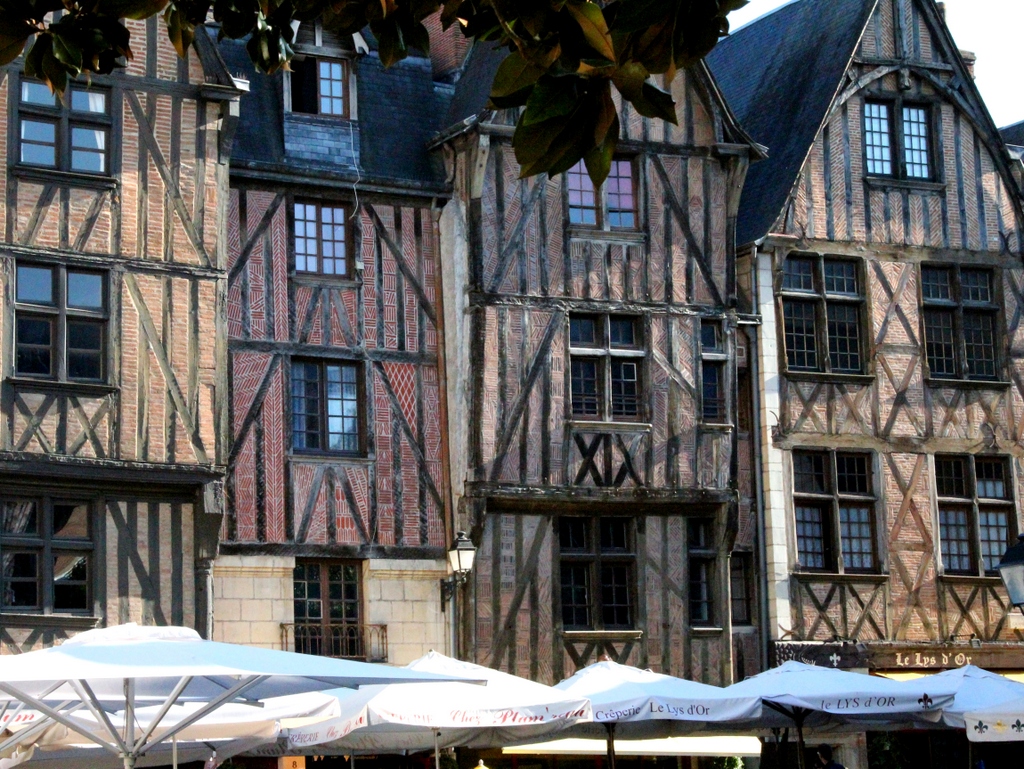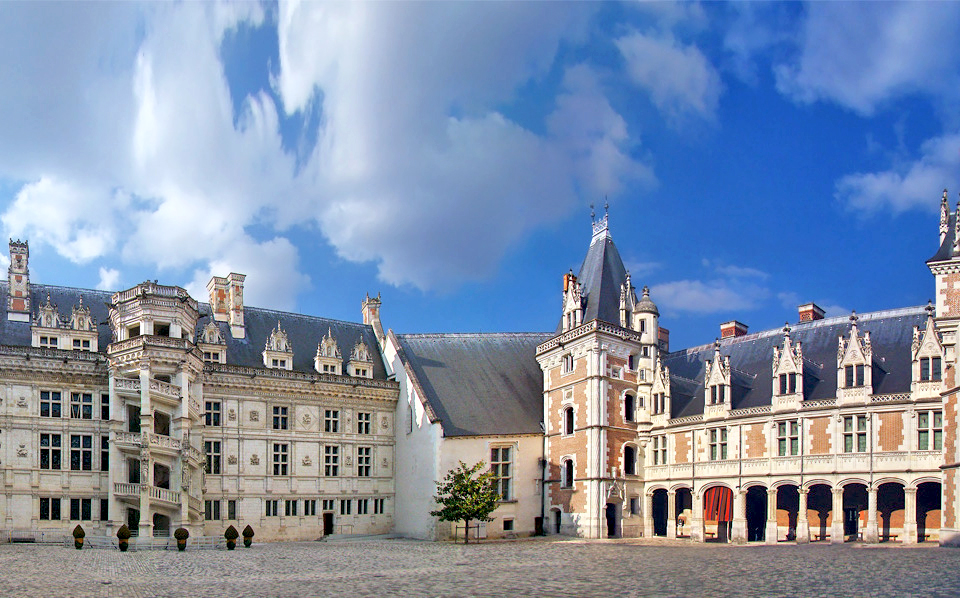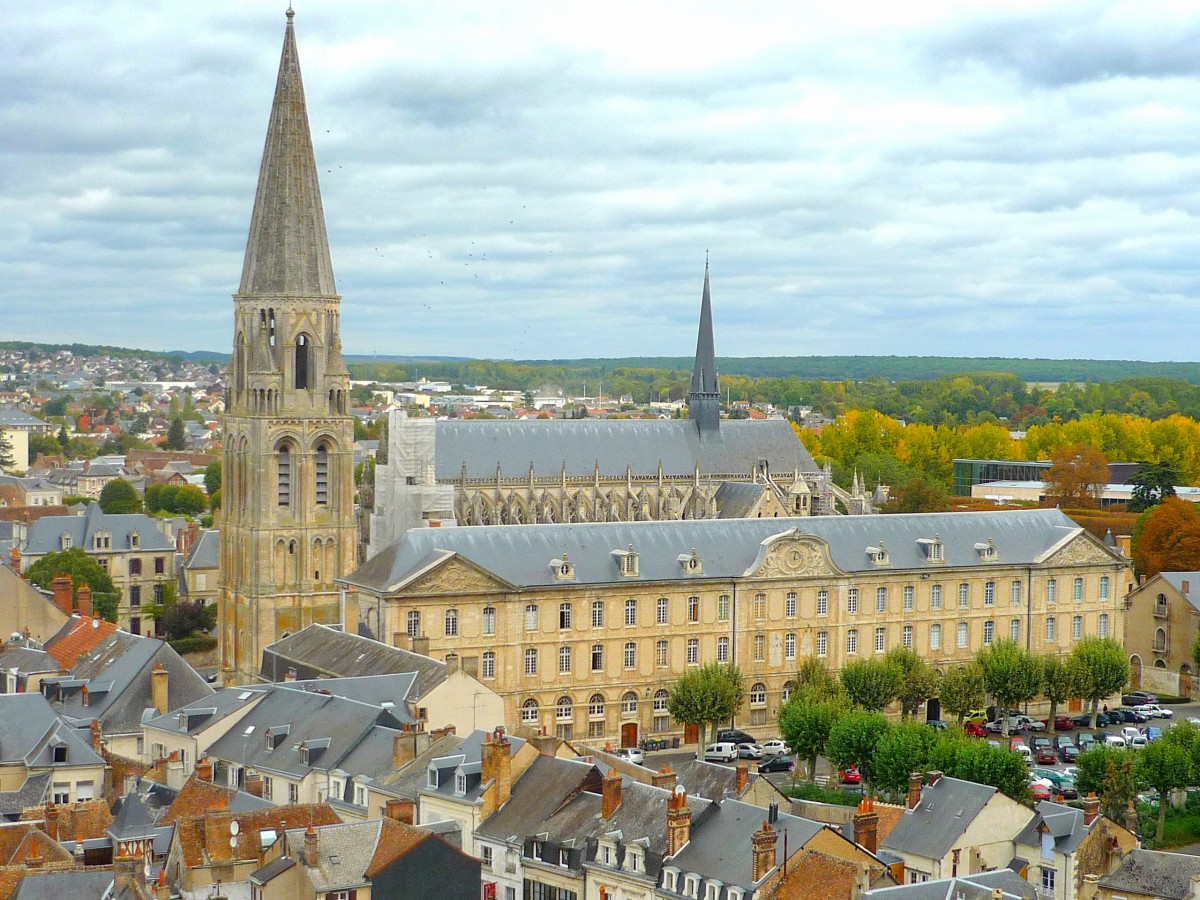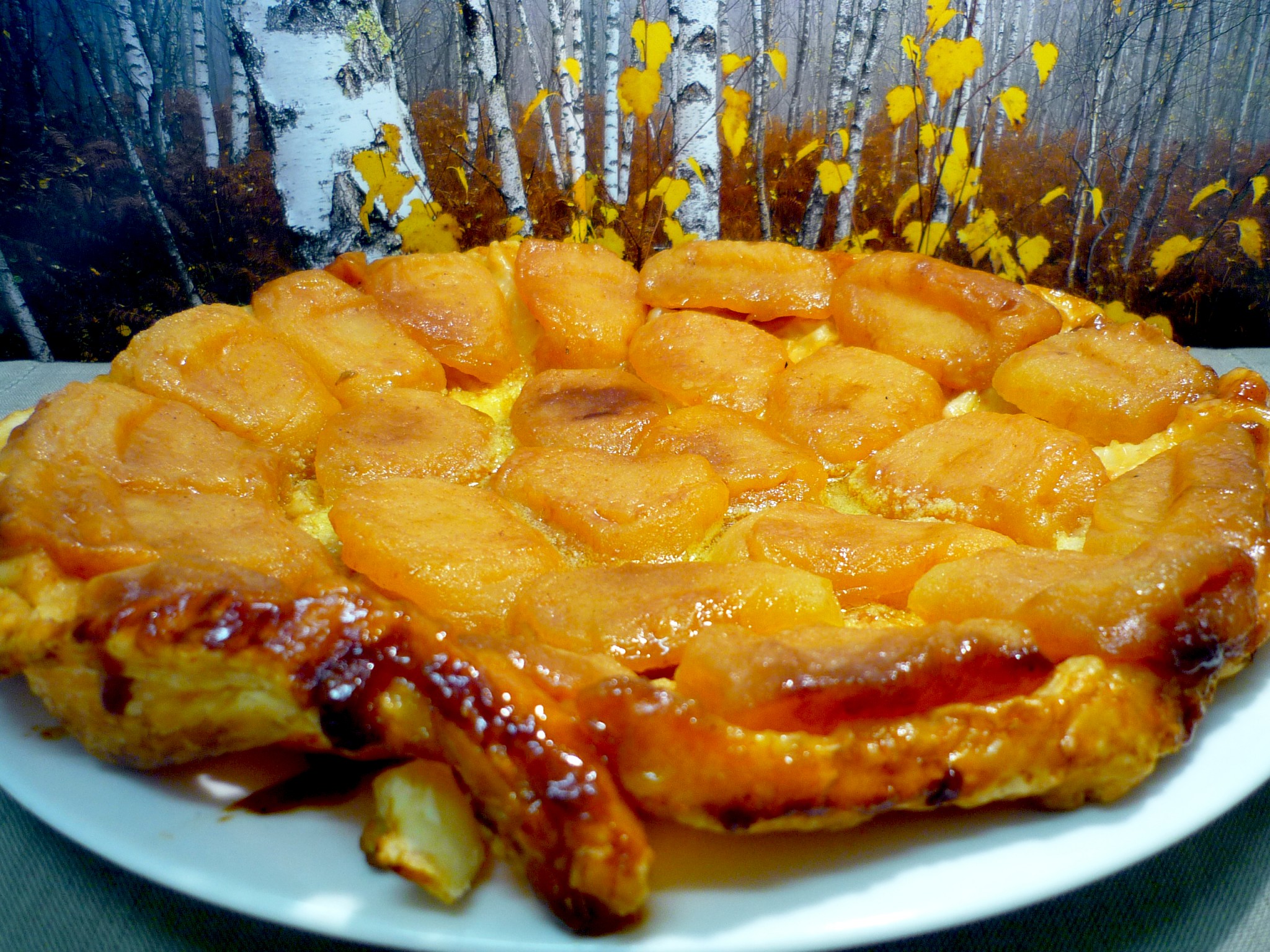From Sancerre to Nantes, the Loire Valley offers such a variety of exceptional sites that it rightly deserves to be called the Valley of the Kings. Here History combines with spiritual and cultural ways of life which is seen in the Renaissance chateaux, historic manor houses, lofty churches and ancient abbeys.
The Loire: France’s longest river
The Loire is France’s longest river (1,020 km) and rises in Mont Gerbier de Jonc in the Massif Central mountain range. First, the river flows northwards to Orléans where it swings west towards Blois, Tours and Nantes. The Loire meets the Atlantic ocean at Saint-Nazaire.

On its journey to the sea, the Loire is reached by a number of tributaries such as the Nièvre, the Allier, the Cher, the Indre, the Vienne, the Maine and the Sèvre Nantaise.

The Loire Valley extends on two administrative regions: Centre and Pays-de-la-Loire.
![River Loire at Saumur © Kev22 - licence [CC BY-SA 3.0] from Wikimedia Commons](https://frenchmoments.eu/wp-content/uploads/2015/05/Loire-at-Saumur-©-Kev22-licence-CC-BY-SA-3.0-from-Wikimedia-Commons.jpg)
The Loire Valley: a bit of History
The region was conquered by Julius Caesar in 52 BC. Peace and stability allowed the growth of Gallo-Roman towns such as Orleans (Genabum), Tours (Caesarodunum), Angers (Juliomagus), and Nantes (Condevincum). The Romans are believed to have introduced the first vines to the Loire Valley.
Christianity appeared to the region in the third century thanks to the missionary work of Gatianus of Tours, the first bishop of Tours. Another Patron saint much admired in the region is Martin of Tours (316-397), one of the most familiar Christian saints.
In 451, the Huns invasion was repelled at Orleans and in 507 the region was occupied by the Franks. Their leader, Clovis is considered the founder of the Merovingian dynasty and converted to Christianity in 496. Until the 10th century, the fertile land was coveted by the Saracens from the South and the Vikings from the North.
The Loire Valley in the Middle-Ages
In the Middle-Ages, the region enjoyed great political and religious power with the growth of key cities: Orleans, Blois, Amboise, Tours, Loches, Saumur, Angers and Nantes (which belonged to Brittany).

Medieval counts were great builders of castles, such as Fulk Nerra (970-1040) who edified 100 castles and abbeys in the Loire Valley. His first castle was built in Langeais which had been restored in the 16th century in the Renaissance style.
The Plantagenets were a powerful dynasty which emerged from Anjou and held the English throne from 1154 to 1485. Chinon was one of their favourite places of residence.
In the East, Orleans was a stronghold of the King of France and part of their Île de France possessions.
During the Hundred Years’ War (1337-1453) most of the Loire Valley was occupied by the English. In 1429, Orleans was besieged by the English army and was miraculously saved by Joan of Arc, a 17 year old peasant girl from Lorraine. With her help, the French army freed the region and chased the English army from France.
![Ussé Castle © Manfred Heyde - licence [CC BY-SA 3.0] from Wikimedia Commons](https://frenchmoments.eu/wp-content/uploads/2015/05/Ussé-Castle-©-Manfred-Heyde-licence-CC-BY-SA-3.0-from-Wikimedia-Commons.jpg)
The Renaissance era
In the beginning of the 16th century, the centre of power in France shifted from Paris to the Loire Valley. There the kings (Louis XII, François I, Henri II) undertook the renovation of medieval fortresses or the construction of fantastic residences in the then fashionable Renaissance style.
French kings had been fighting in Italy and discovered the Renaissance architecture, art and design. Wanting to bring back this new style to their kingdom, great architects and artists such as Leonardo da Vinci from Italy were invited to work in the Loire Valley. They remarkably adapted the new style to the landscape of the Loire and their grandest example is undeniably the fantastic chateau of Chambord.
The French nobility and the court followed the royal family and relocated to the Loire Valley where they built additional chateaux (Azay, Meung, Villandry).
![Meung-sur-Loire © Manfred Heyde - licence [CC BY-SA 3.0] from Wikimedia Commons](https://frenchmoments.eu/wp-content/uploads/2013/10/Meung-sur-Loire-02-©-Manfred-Heyde-licence-CC-BY-SA-3.0-from-Wikimedia-Commons1.jpg)
The Wars of Religion
The French Wars of Religion (1562-1598) ended the golden age of the Loire Valley with an estimated 2-4 million people killed throughout the kingdom. The French kings and their courts left the Loire Valley and relocated to Paris.
Protestantism lost ground in the 17th and 18th centuries as the Catholic church founded a great number of convents and seminaries in the Loire Valley. The development of the agricultural and textile industries led to an economic growth.
During the French Revolution
The French Revolution led to a split in two zones: Maine and Anjou joined Vendée in their support for the king whereas Touraine and Orléanais backed the ideals of the Revolutionaries. Many chateaux and catholic sanctuaries were sacked and pillaged if not destroyed.
From the 19th century…
In the 19th century, the development of railways in the region led to the decline of boat transportation on the Loire River.
During the First World War, the American Expeditionary Force set up its headquarters in Tours.
In 1940, Marshal Pétain met Hitler in Montoire-sur-Loir and agreed to his terms for the country to be divided into two zones: the occupied zone and the free zone. All the Loire Valley with the exception of Southern Touraine was included in the occupied zone.
The Allied forces liberated the area from the Germans in September 1944.
Today, the UNESCO-listed region of the Loire Valley is a premier tourist destination for the incredible heritage it offers to its visitors.
The chateaux of the Loire
![Azay-le-Rideau © Aubry Françon - licence [CC BY-SA 3.0] from Wikimedia Commons](https://frenchmoments.eu/wp-content/uploads/2015/05/Azay-le-Rideau-05-©-Aubry-Françon-licence-CC-BY-SA-3.0-from-Wikimedia-Commons.jpg)
Some of the most famous castles of France are found in the region: Amboise, Azay-le-Rideau, Blois, Chambord, Chaumont, Chenonceau, Chinon, Langeais, Saumur, Ussé or Villandry.
Along the Loire River, about three hundreds chateaux and manors are romantically set in beautiful landscapes:
- some along rivers (Azay-le-Rideau, Chenonceau),
- nestled in the woods (Chambord, Cheverny),
- and others on the top of hills (Amboise, Chaumont, Chinon).
Most of these residences have been built in the 16th century in Renaissance style, often on the site of a former medieval fortress (Langeais, Loches, Saumur, Sully-sur-Loire).
The majority are privately owned (Brissac, Cheverny) whereas some have been taken over by the State or local authorities (Azay-le-Rideau, Chambord).
The most famous chateaux of the Loire

A list of our favourite chateaux:
Amboise
![Amboise Castle © Christophe.Finot - licence [CC BY-SA 2.5] from Wikimedia Commons](https://frenchmoments.eu/wp-content/uploads/2012/11/Amboise-Castle-©-Christophe.Finot-licence-CC-BY-SA-2.5-from-Wikimedia-Commons.jpg)
Angers
![Angers Castle © Tango7174 - licence [CC BY-SA 3.0] from Wikimedia Commons](https://frenchmoments.eu/wp-content/uploads/2015/05/Angers-Castle-©-Tango7174-licence-CC-BY-SA-3.0-from-Wikimedia-Commons.jpg)
Azay-le-Rideau
![Azay-le-Rideau © Jean-Christophe BENOIST - licence [CC BY 3.0] from Wikimedia Commons](https://frenchmoments.eu/wp-content/uploads/2015/04/Azay-le-Rideau-01-©-Jean-Christophe-BENOIST-licence-CC-BY-3.0-from-Wikimedia-Commons.jpg)
Blois

Brézé
![Brézé Castle © Manfred Heyde - licence [CC BY-SA 3.0] from Wikimedia Commons](https://frenchmoments.eu/wp-content/uploads/2015/05/Brézé-Castle-©-Manfred-Heyde-licence-CC-BY-SA-3.0-from-Wikimedia-Commons.jpg)
Brissac
![Brissac Castle © Manfred Heyde - licence [CC BY-SA 3.0] from Wikimedia Commons](https://frenchmoments.eu/wp-content/uploads/2015/05/Brissac-Castle-©-Manfred-Heyde-licence-CC-BY-SA-3.0-from-Wikimedia-Commons.jpg)
Chambord
![The Castle's Northwest facade © Benh LIEU SONG [CC BY-SA 3.0] from Wikimedia Commons](https://frenchmoments.eu/wp-content/uploads/2012/11/Chambord-Castle-Northwest-facade-©-Benh-LIEU-SONG-CC-BY-SA-3.0-from-Wikimedia-Commons.jpg)
Chaumont
![Chaumont sur Loire Castle © Christophe.Finot - licence [CC BY-SA 1.0] from Wikimedia Commons](https://frenchmoments.eu/wp-content/uploads/2012/11/Chaumont-sur-Loire-Castle-©-Christophe.Finot-licence-CC-BY-SA-1.0-from-Wikimedia-Commons.jpg)
Chenonceau
![Chenonceau Castle © Yvan Lastes - licence [CC BY-SA 3.0] from Wikimedia Commons](https://frenchmoments.eu/wp-content/uploads/2012/11/Chenonceau-Castle-©-Yvan-Lastes-licence-CC-BY-SA-3.0-from-Wikimedia-Commons.jpg)
Cheverny
![Cheverny Castle © Jean-Christophe BENOIST - licence [CC BY 3.0] from Wikimedia Commons](https://frenchmoments.eu/wp-content/uploads/2015/05/Cheverny-Castle-©-Jean-Christophe-BENOIST-licence-CC-BY-3.0-from-Wikimedia-Commons.jpg)
Chinon
![Chinon Castle © Franck Badaire — Fonds documentaire du Conseil Général d'Indre-et-Loire - licence [CC BY-SA 3.0] from Wikimedia Commons](https://frenchmoments.eu/wp-content/uploads/2015/05/Chinon-Castle-©-Franck-Badaire-—-Fonds-documentaire-du-Conseil-Général-dIndre-et-Loire-licence-CC-BY-SA-3.0-from-Wikimedia-Commons.jpg)
Gien
![Gien Castle © Roulex_45 - licence [CC BY-SA 3.0] from Wikimedia Commons](https://frenchmoments.eu/wp-content/uploads/2015/05/Gien-Castle-©-Roulex_45-licence-CC-BY-SA-3.0-from-Wikimedia-Commons.jpg)
Langeais
![Langeais Castle © sybarite48 - licence [CC BY 2.0] from Wikimedia Commons](https://frenchmoments.eu/wp-content/uploads/2015/05/Langeais-Castle-©-sybarite48-licence-CC-BY-2.0-from-Wikimedia-Commons.jpg)
Loches
![Loches © Jaunet - licence [CC BY-SA 3.0], from Wikimedia Commons](https://frenchmoments.eu/wp-content/uploads/2013/10/Loches-©-Jaunet-licence-CC-BY-SA-3.0-from-Wikimedia-Commons.jpg)
Meung

Montpoupon
![Montpoupon Castle © I, Nitot - licence [CC BY-SA 3.0] from Wikimedia Commons](https://frenchmoments.eu/wp-content/uploads/2015/05/Montpoupon-Castle-©-I-Nitot-licence-CC-BY-SA-3.0-from-Wikimedia-Commons.jpg)
Montrésor
![Montrésor Castle © JLPC - licence [CC BY-SA 3.0] from Wikimedia Commons](https://frenchmoments.eu/wp-content/uploads/2015/05/Montrésor-Castle-©-JLPC-licence-CC-BY-SA-3.0-from-Wikimedia-Commons.jpg)
Montreuil-Bellay
![Montreuil-Bellay Castle © Kormin - licence [CC BY-SA 3.0] from Wikimedia Commons](https://frenchmoments.eu/wp-content/uploads/2015/05/Montreuil-Bellay-Castle-©-Kormin-licence-CC-BY-SA-3.0-from-Wikimedia-Commons.jpg)
Montsoreau

Nantes
![Nantes Castle © Ludovic Toinel - licence [CC BY-SA 3.0] from Wikimedia Commons](https://frenchmoments.eu/wp-content/uploads/2013/05/Nantes_-_château_-_porte.jpg)
Le Plessis-Bourré
![Le Plessis-Bourré Castle © NonNobis - licence [CC BY-SA 3.0] from Wikimedia Commons](https://frenchmoments.eu/wp-content/uploads/2015/05/Le-Plessis-Bourré-Castle-©-NonNobis-licence-CC-BY-SA-3.0-from-Wikimedia-Commons.jpg)
Saumur
![Saumur Castle © Martin Falbisoner - licence [CC BY-SA 3.0] from Wikimedia Commons](https://frenchmoments.eu/wp-content/uploads/2015/05/Saumur-Castle-©-Martin-Falbisoner-licence-CC-BY-SA-3.0-from-Wikimedia-Commons.jpg)
Serrant
![Serrant Castle © Thierry de Villepin - licence [CC BY-SA 3.0] from Wikimedia Commons](https://frenchmoments.eu/wp-content/uploads/2015/05/Serrant-Castle-©-Thierry-de-Villepin-licence-CC-BY-SA-3.0-from-Wikimedia-Commons.jpg)
Sully-sur-Loire
![Sully-sur-Loire Castle © Pline - licence [CC BY-SA 3.0] from Wikimedia Commons](https://frenchmoments.eu/wp-content/uploads/2015/05/Sully-sur-Loire-Castle-©-Pline-licence-CC-BY-SA-3.0-from-Wikimedia-Commons.jpg)
Ussé
![Ussé Castle © Manfred Heyde - licence [CC BY-SA 3.0] from Wikimedia Commons](https://frenchmoments.eu/wp-content/uploads/2015/05/Ussé-Castle-©-Manfred-Heyde-licence-CC-BY-SA-3.0-from-Wikimedia-Commons.jpg)
Valençay
![Valençay Castle © Jean-Christophe BENOIST - licence [CC BY 3.0] from Wikimedia Commons](https://frenchmoments.eu/wp-content/uploads/2015/05/Valençay-Castle-©-Jean-Christophe-BENOIST-licence-CC-BY-3.0-from-Wikimedia-Commons.jpg)
Vendôme

Villandry

Religious sanctuaries
![Blois St. Nicolas Church © Taxiarchos228 - licence [CC BY-SA 3.0] from Wikimedia Commons](https://frenchmoments.eu/wp-content/uploads/2015/05/Blois-St.-Nicolas-Church-©-Taxiarchos228-licence-CC-BY-SA-3.0-from-Wikimedia-Commons.jpg)
The region is home to many grand cathedrals, churches and abbeys such as St. Gatien cathedral in Tours, Sainte-Croix cathedral in Orléans, St. Louis cathedral in Blois, St. Nicolas church in Blois, St. Maurice cathedral in Angers, St. Pierre and St. Paul cathedral in Nantes, Fontevraud Abbey, Vendôme Abbey.
The cathedral of Orléans:
![Orleans Cathedral © Vincent4145 - licence [CC BY-SA 3.0] from Wikimedia Commons](https://frenchmoments.eu/wp-content/uploads/2015/05/Orleans-Cathedral-©-Vincent4145-licence-CC-BY-SA-3.0-from-Wikimedia-Commons.jpg)
The cathedral of Tours:
![Tours Cathedral © Velvet - licence [CC BY-SA 3.0] from Wikimedia Commons](https://frenchmoments.eu/wp-content/uploads/2015/05/Tours-Cathedral-©-Velvet-licence-CC-BY-SA-3.0-from-Wikimedia-Commons.jpg)
![Fontevraud Abbey © Chatmouettes - licence [CC BY-SA 3.0] from Wikimedia Commons](https://frenchmoments.eu/wp-content/uploads/2015/05/Fontevraud-Abbey-©-Chatmouettes-licence-CC-BY-SA-3.0-from-Wikimedia-Commons.jpg)

Local produce and wine
The Loire Valley is referred as the Garden of France for the many vineyards, orchards, flower fields which line the banks of the rivers.
The region’s villages host hundreds of open-air markets where locals display fresh vegetables, fruits, fish and flowers in great variety. Local producers are proud of their asparagus from the Touraine, onions, shallots and pears from Anjou, artichokes from Angers, potatoes from Saumur, eels and pike perches.
In the region of Nantes, the production of lilies of the valley provides the Paris markets with fresh bunches in time for May Day.
The region is home to a few delicious goat’s cheese: the Sainte-Maure log, the pyramid-shaped Valençay and Pouligny-Saint-Pierre, and the flat and round Selles-sur-Cher.

Famous desserts include Tarte Tatin from the Sologne area.

The fruity wines of the Loire are produced in a number of wine regions extending from Sancerre to Nantes (Touraine, Anjou).
![Saumur Castle © Coucouoeuf - licence [CC BY-SA 3.0] from Wikimedia Commons](https://frenchmoments.eu/wp-content/uploads/2014/05/Saumur-Castle-Photo-©-Coucouoeuf-licence-CC-BY-SA-3.0-from-Wikimedia-Commons.jpg)
Many names of vineyards have gained worldwide recognition: Vouvray, Chinon, Saumur, Sancerre, Pouilly-Fumé… The region gathers 87 official labels under the Appellations d’origine contrôlée (AOC), Vins Délimités de Qualité Supérieure (VDQS) and Vins de Pays. Thought to have been planted by the Romans in the first century BC, the vineyards of the Loire are the fifth-largest wine-making region of France.
The French Language
Known as the Cradle of the French Language, the region around Tours (Touraine) is thought to be where the purest French is spoken. This standard pronunciation of the French language is allegedly lacking any perceived accent unlike in Paris.
The UNESCO listing
![Chambord North Facade © Nono vlf [CC BY-SA 4.0] from Wikimedia Commons](https://frenchmoments.eu/wp-content/uploads/2012/11/Chambord-North-Facade-©-Nono-vlf-CC-BY-SA-4.0-from-Wikimedia-Commons.jpg)
In 2000, UNESCO listed the Loire Valley from Sully-sur-Loire to Chalonnes-sur-Loire as a World Heritage site. The organisation described the area as:
“An exceptional cultural landscape, of great beauty, comprised of historic cities and villages, great architectural monuments – the châteaux – and lands that have been cultivated and shaped by centuries of interaction between local populations and their physical environment, in particular the Loire itself.“
Official website in English about the Loire Châteaux.



